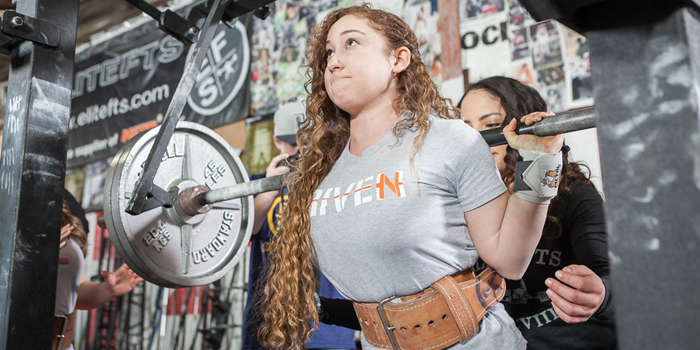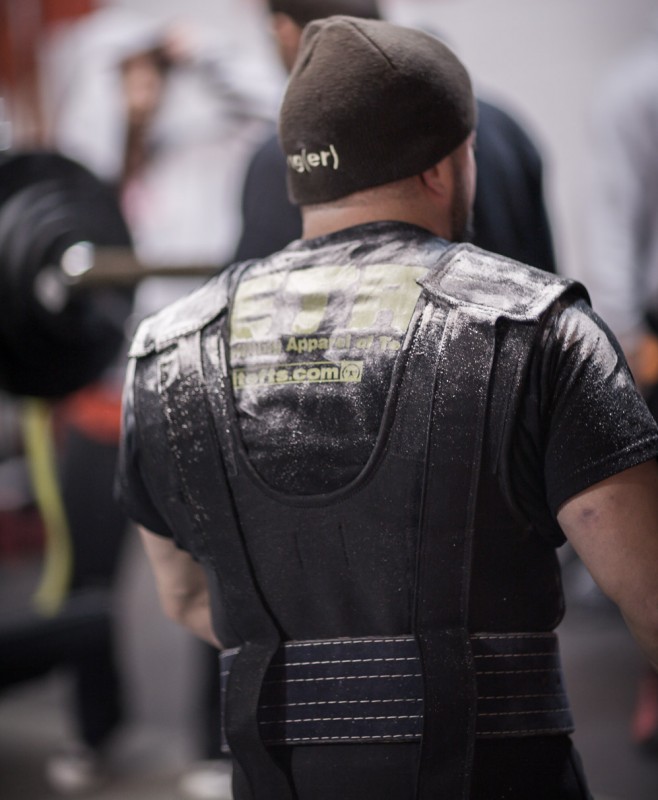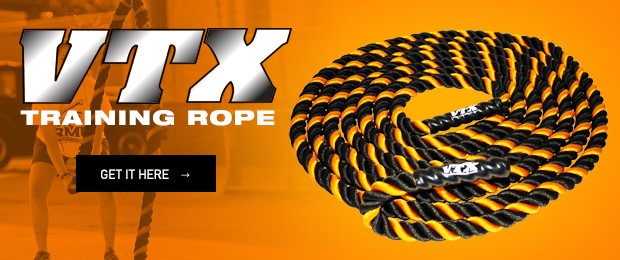
Do any of the following statements sound familiar?
- "I’ve been dieting for weeks, counting every macro and calorie, but I’m no longer losing weight."
- "I’ve been following my training program perfectly, yet I haven’t gotten stronger in awhile."
- "I’m training hard, taking my supplements, eating great, and sleeping well, but I can’t seem to gain more muscle."
It’s the worst feeling in the world when you put in the iron hours but still can’t progress. Sadly, people who are no longer novices will eventually be faced with a training plateau. When this time comes, it’s important to have a toolbox of tricks to help you get through the hard times.
Solution 1: Programming for Plateaus
When you first start dieting, most diets that put you in a caloric deficit will cause weight loss. That is, until the inevitable plateau hits. You know this as the moment when, despite being in a caloric deficit, you fail to lose weight. Sadly, there is no single reason for this occurring. Instead, the dreaded plateau results from a combination of factors that include diet-induced decreases in metabolic rate1, energy expenditure2, and satiety3.
RECENT: Prework: The Best Thing Your Training Program Likely Needs
Additionally, chronic dieting can also cause your body to get smarter about using energy to power the work it does, thus enhancing energy efficiency (AKA burning fewer calories for the same amount of activity) 4. Basically, you end up in a spot where your training volume is high, your calories are low, and your metabolic rate is slow. This kind of scenario makes weight loss nearly impossible. So, since dieting induces a bunch of weight loss (un)friendly adaptations, you need to take countermeasures like:
- Decrease metabolic efficiency.
- Increase metabolic rate.
- Increase energy expenditure.
- Suppress feelings of hunger.
To increase metabolic rate, try periodic overfeeding, also known as refeeds. Refeeds are programed periods of overfeeding (eating in a caloric surplus). They normally last for a few hours to a day, to three days. They work by increasing metabolic rate and circulating leptin levels5, 6.
To decrease metabolic efficiency, the measures needed are not as fun as refeeds. They require you to do exercises that you are extremely inefficient at. For example, if all your cardio is done while walking on the treadmill, then it is likely you are efficient at that activity and your body no longer needs to burn as many calories to keep you walking as it once did. So to become more energy inefficient, you need to start doing things like sprint tabatas, intervals on the stepper without the handrail, or outdoor hill sprints. You have to do stuff you are inefficient at so your body doesn’t have a chance to adapt and then increase your metabolic efficiency.
Finally, if you want to increase your daily energy expenditure, the easiest way to do that is to stop taking the easy option. Park at the end of the lot, start taking the stairs and embrace things like mowing the lawn and cleaning the house. That stuff will increase the number of calories you burn each day without requiring you to spend more time in the gym.
Solution 2: Training to Train Less
When you are meticulous about your training, the hardest thing in the world is to be told you need to train less. Sadly, sometimes that’s just what the doctor ordered when your training progress starts to tank and life stressors take their toll. Unless you’re training for mental health, when you stop progressing, start thinking about adding more days off. The action of training itself (yes, even lifting) is mainly a catabolic process when you are doing your sets and reps in the gym. Repeated muscle movements induce a set of metabolic pathways that deplete energy stores as they work to provide ATP (energy) for each muscle contraction. It is only during recovery that things become truly anabolic. Recovery is the period in which new proteins are made to support the muscle repairing and rebuilding. As a result, the ability to adapt from training is heavily influenced by how strongly the training load affects one’s body, and how much of a perceived stressor it is.
The homeostasis that is disrupted during training must be restored during recovery, or else one cannot adapt and super compensate. This means you must allow for recovery and repair if you want to get bigger, faster, or stronger. If you find yourself faced with low spirits, anxiety, abnormal sleep, and hunger, it's a good sign that it's time for you to take a day or two off. And if you refuse to take them off, at least do yourself a favor and program a recovery workout in place of a hardcore iron session. Just remember, sometimes less is more when it comes to training progress.
Solution 3: Being Catabolic to Get Anabolic
In the muscle, aerobic metabolism predominantly supplies the muscle's day-to-day energy demands. This means that the presence of O2 is necessary for muscle to make energy. Early work in rats found that capillary proliferation occurs after muscle hypertrophy 7. Thus, for muscle to keep its normal capillary to muscle fiber ratio during hypertrophy, new blood vessel formation (angiogenesis) and capillary reorganization must occur.
The long and short of this is that your muscles need O2 to live, and when they get bigger, they need more O2. Unfortunately, it appears that if they don’t get what they want, they can’t keep growing. So, if your muscle mass gains have come to a halt, perhaps it's time to start doing some low intensity cardio. This will increase blood/O2 to the working muscle, angiogenesis, and new capillary formation without being too catabolic. If you don’t like classical cardio, you can always add some high rep (20 or more), short rest supersets into your training. That type of training can also increase blood flow to the working muscle and enhance its aerobic capacity. Sled dragging also tends to do the same thing, so that will work too. So, no excuses. If you have stopped growing, and are doing everything else right, try adding in some low intensity cardio on your rest days and see if it helps out.
With this new knowledge, go forth and tackle some plateaus!
References
- Dulloo, A.G. & Jacquet, J. Adaptive reduction in basal metabolic rate in response to food deprivation in humans: a role for feedback signals from fat stores. The American journal of clinical nutrition 68, 599-606 (1998).
- Maclean, P.S., Bergouignan, A., Cornier, M.A. & Jackman, M.R. Biology's response to dieting: the impetus for weight regain. American journal of physiology. Regulatory, integrative and comparative physiology 301, R581-600 (2011).
- Trexler, E.T., Smith-Ryan, A.E. & Norton, L.E. Metabolic adaptation to weight loss: implications for the athlete. Journal of the International Society of Sports Nutrition 11, 7 (2014).
- MacLean, P.S. et al. Peripheral metabolic responses to prolonged weight reduction that promote rapid, efficient regain in obesity-prone rats. American journal of physiology. Regulatory, integrative and comparative physiology 290, R1577-1588 (2006).
- Chin-Chance, C., Polonsky, K.S. & Schoeller, D.A. Twenty-four-hour leptin levels respond to cumulative short-term energy imbalance and predict subsequent intake. The Journal of clinical endocrinology and metabolism 85, 2685-2691 (2000).
- Dirlewanger, M. et al. Effects of short-term carbohydrate or fat overfeeding on energy expenditure and plasma leptin concentrations in healthy female subjects. International journal of obesity and related metabolic disorders : journal of the International Association for the Study of Obesity 24, 1413-1418 (2000).
- Degens, H., Turek, Z., Hoofd, L.J., Van't Hof, M.A. & Binkhorst, R.A. The relationship between capillarisation and fibre types during compensatory hypertrophy of the plantaris muscle in the rat. Journal of anatomy 180 ( Pt 3), 455-463 (1992).











